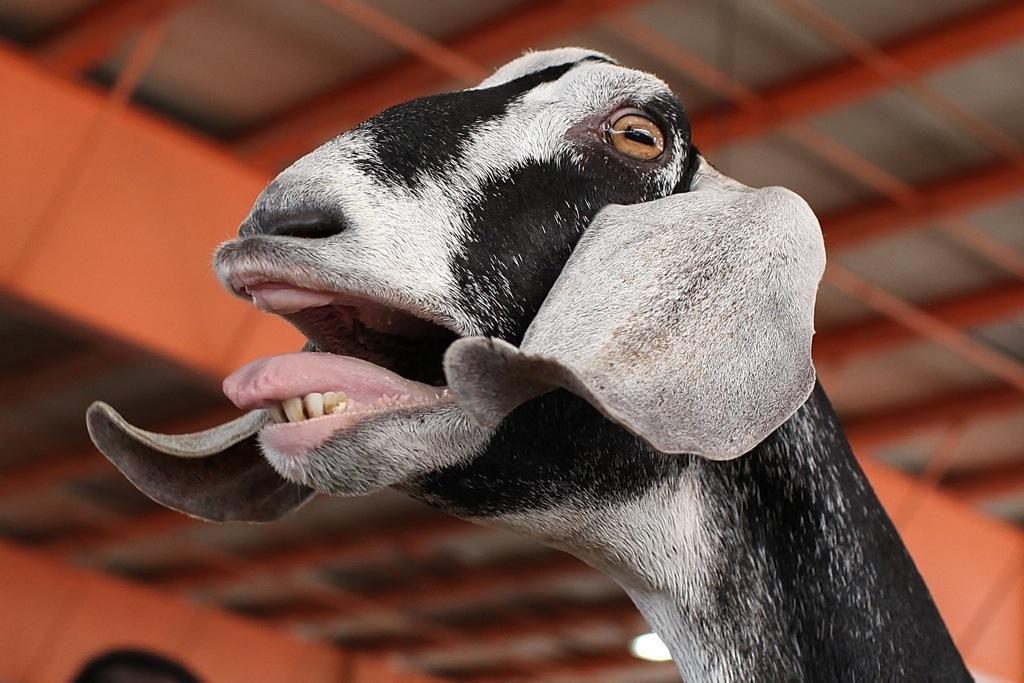South Africa taxi industry takes flight
South Africans will soon be able to fly with their goats.
JOHANNESBURG, South Africa — South Africa's taxi industry is launching its own airline, aiming to bring the speed of air travel to the masses. You can even travel with your goat.
But for this airline to succeed, it must first demolish the South African perception of the taxi industry as a violent and accident-prone haven of lawless drivers and broken vehicles.
When you think taxis in South Africa, don’t picture yellow cabs. "Taxi" chiefly refers to the ubiquitous 15-seat white vans that pull over anywhere to cram in passengers. The taxis are notorious for dangerous driving, safety violations and violent tactics during disputes.
Developed during apartheid times because of the lack of public transit for black South Africans working in distant white areas, these privately owned "minibus taxis" are still commonly used today, with patrons hailing a taxi at the side of a road by making hand signals to indicate their desired direction of travel.
Now, in a significant departure from its daily trade, the industry that represents South African taxis is going airborne, taking its reputation to the sky with the country’s newest budget airline.
"I can see some of you rolling your eyes because of how our taxi drivers drive," said Nkululeko Buthelezi, the South African National Taxi Council (Santaco) business development officer, at a press conference in Johannesburg.
"I can assure you we won't allow our taxi drivers to drive [the planes]," he said, according to the South African Press Association.
Santaco Airlines, officially launched Sept. 16, is scheduled to begin operating flights by late November between Johannesburg's Lanseria airport, Bisho airport in the rural Eastern Cape province, and Cape Town International.
Buthelezi said this route makes sense for urban black South Africans who might otherwise have to make a 14-hour taxi journey from the big city to their village for a funeral or other traditional ceremony, only to have to return home five hours later.
Santaco Airlines’ prospective customers are the people who might ordinarily take a minibus taxi on a long journey, but now have a little more money to spend —in other words, the country’s growing middle class of black consumers. The airline wants to shake off the perception that air travel is only for the rich.
Santaco president Jabulani Mthembu said the low-cost airline will bring dignity to people whose only experience of aviation so far might have been watching a plane fly over their rooftop.
In deference to the requirements of traditional ceremonies, Santaco Airlines says that passengers will be allowed to bring their goats on the plane, with cages provided.
“In certain airlines, people are able to put their dogs in cages and take them with them on the airline. Why can’t we do that for our people who have been supporting us for years?” Mthembu told the New Age newspaper.
Tickets are to be offered for purchase at minibus taxi ranks, and ticket prices, which have yet to be announced, will be inclusive of transport from a taxi rank to the airport, and then transportation to a taxi rank at the final destination.
But there is still some PR work ahead. In an online poll by the Johannesburg Times, 65 percent of respondents did not think this new airline would take off.
And indeed, the airline won’t actually be run by the taxi bosses, at least initially. Santaco airline will at first be operated by Air Aquarius, which will supply the aircraft, crew and aviation licenses, with Santaco expected to take over operations after 18 to 24 months.
When Santaco first announced that they were planning to launch an airline, the jokes flew among South Africans on Twitter that the pilots would make a U-turn in midair if the money collected didn’t match the number of people on board, or that passengers would use hand signals to convey where they wanted to go.
The New Age reported that invited dignitaries for an inaugural flight on Santaco Airlines "were treated like royalty and were welcomed aboard by warm smiles from the attendants who assisted everyone to their seats — unlike the rude taxi marshals who at times choose where you should sit."
While in midair on the inaugural flight, a 10 rand ($1.30) banknote was passed from the back of the aircraft to the front, as is done among taxi customers.
“When the note got to the front it was passed back as it was alleged the pilot did not have change,” the New Age reported. “This caused much laughter in the plane as most people could identify with the no change issue.”
But jokes aside, Santaco is a significant venture in South Africa: It will be the largest fully black South African-owned airline, with more than 100,000 taxi owners said to be shareholders, and has received praise for the “brave step” by President Jacob Zuma.
“The Santaco Airlines venture is also significant because it is a practical example of economic and social emancipation,” said Zuma.
The taxi industry doesn’t want to stop at airplanes. Encouraged by Zuma, Santaco said that it is looking to expand next into the marine industry and wants to launch a ship that would operate along the Eastern Cape coast.
But even the president acknowledges the nasty reputation of South Africa’s taxis.
“For many years, the taxi industry has been shrouded in controversy. It has been faced by violence, poor service and a bad safety record,” said Zuma. “The industry is steadily shedding the negative image.”
